Hello and welcome to ‘Focused on Feld’. In my Focused on Feld series of reviews, I am working my way through Stefan Feld’s entire catalogue. Over the years, I have hunted down and collected every title he has ever put out. Needless to say, I’m a fan of his work. I’m such a fan, in fact, that when I noticed there were no active Stefan Feld fan groups on Facebook, I created one of my own.
Today we’re going to talk about 2023’s Cuzco, his 38th game.
The sixth game in Queen Games’s Stefan Feld City Collection, Cuzco is a reimplementation of 2013’s Bora Bora. Bora Bora took place in a Polynesian setting replete with beaches, tribesmen, and women wearing hula skirts. Cuzco hearkens back to an earlier age: the age of the Incas. In Cuzco, the players are messengers, running all over the empire, delivering important information on behalf of the Sapa Inca (the emperor). Like Bora Bora, almost everything you do in Cuzco is going to earn you points, and the person with the most points at the end of the game wins.
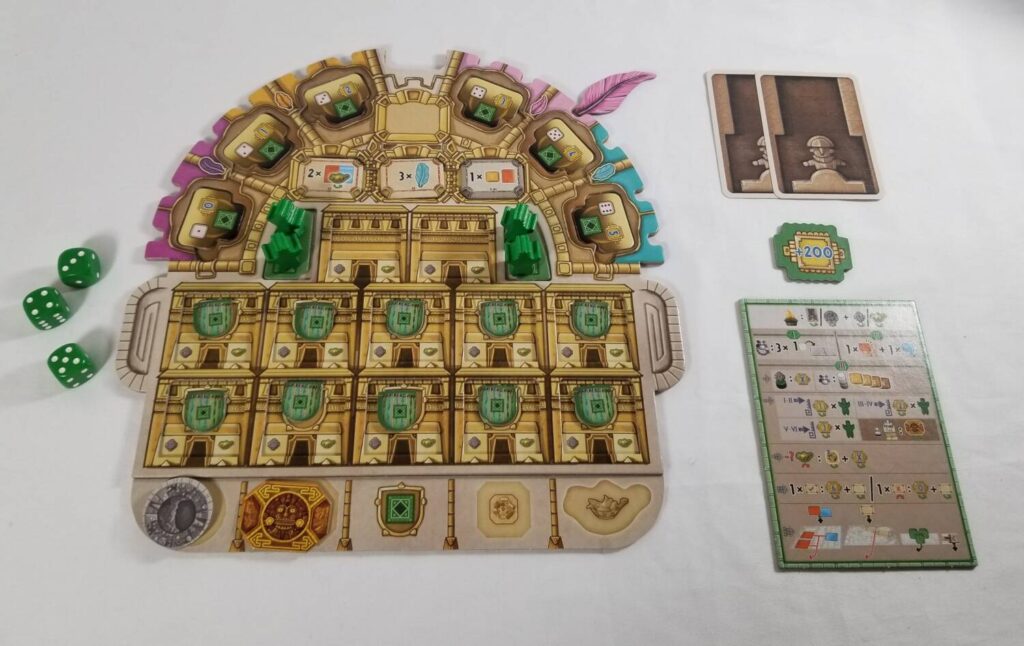
Aside from the dramatic shift in theme, there isn’t much to distinguish Cuzco, gameplay-wise, from its predecessor. In fact, the games are so similar that if you want to learn to how to play Cuzco, you should just go check out the “How to Play” section of my Bora Bora review and use this handy word substitute chart:
| Bora Bora term | Cuzco term |
|---|---|
| Man | Farm Worker |
| Woman | Student |
| Tattoo | Food |
| Shell | Knowledge |
| Jewelry | Goods |
| Task | Mission |
| Island | Village |
| Land | Stone trail |
| Sea | Rope Bridge |
There’s more, but you get the point. Side-by-side, pound-for-pound, Cuzco is just Bora Bora wearing a different skin. If you came to Cuzco hoping to find something different, you’re going to walk away pretty disappointed. That being said: while there’s nothing much new under the sun, there are a few things that may sway the balance in Cuzco’s favor.
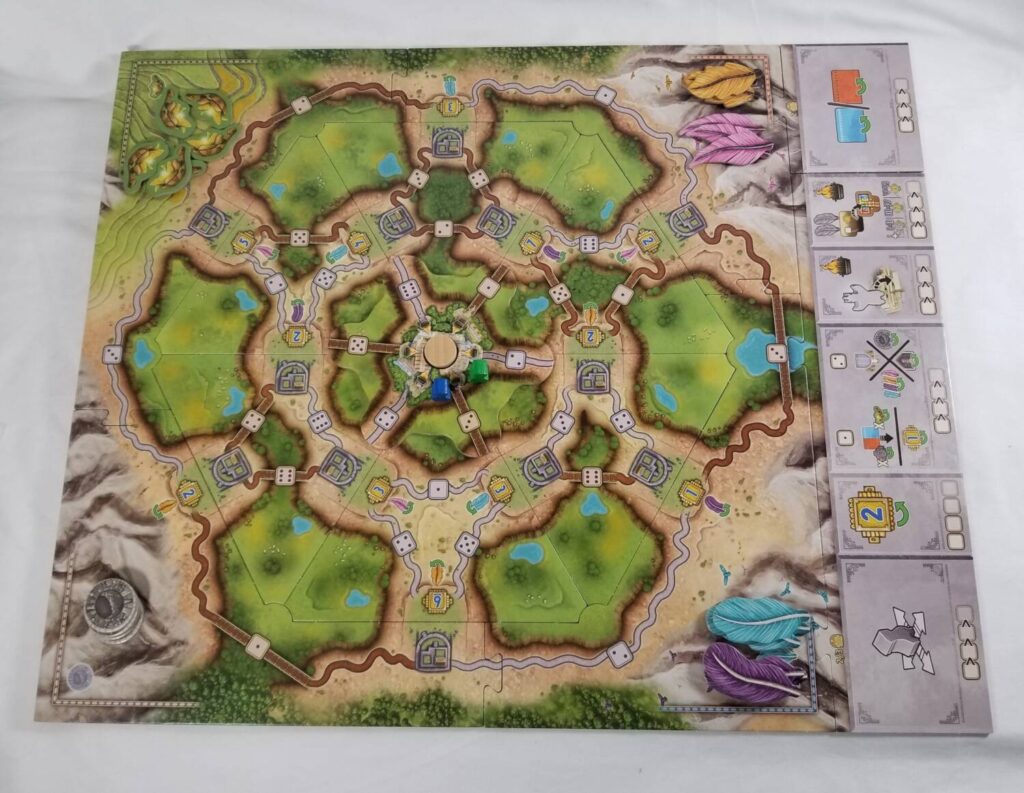
For starters, Cuzco’s game board is split into different segments, so the setup will be slightly different from one game to the next. Bora Bora lacks this flexibility. But, honestly, while I appreciate the presence of variability, it doesn’t really seem like it makes that much of a difference. You’re still very constrained by the dice.

Secondly, unlike Bora Bora where the God cards were randomly turned face up from the same deck, Cuzco splits them each into their own colored decks, giving the players a bit more agency over their fates than they had in Bora Bora. That game had exactly five types of God cards—one in each of the five colors. In Cuzco, the original God card actions have been reproduced, but each color has had an extra two actions added. In Bora Bora, there were times where every God card that was turned up was exactly the same. This never happens in Cuzco. While you could largely ignore the God cards in Bora Bora, the same can’t be said for the ones in this game. There’s a lot of competition for them and you’ll often find yourself planning your strategy around acquiring the choicest ones.
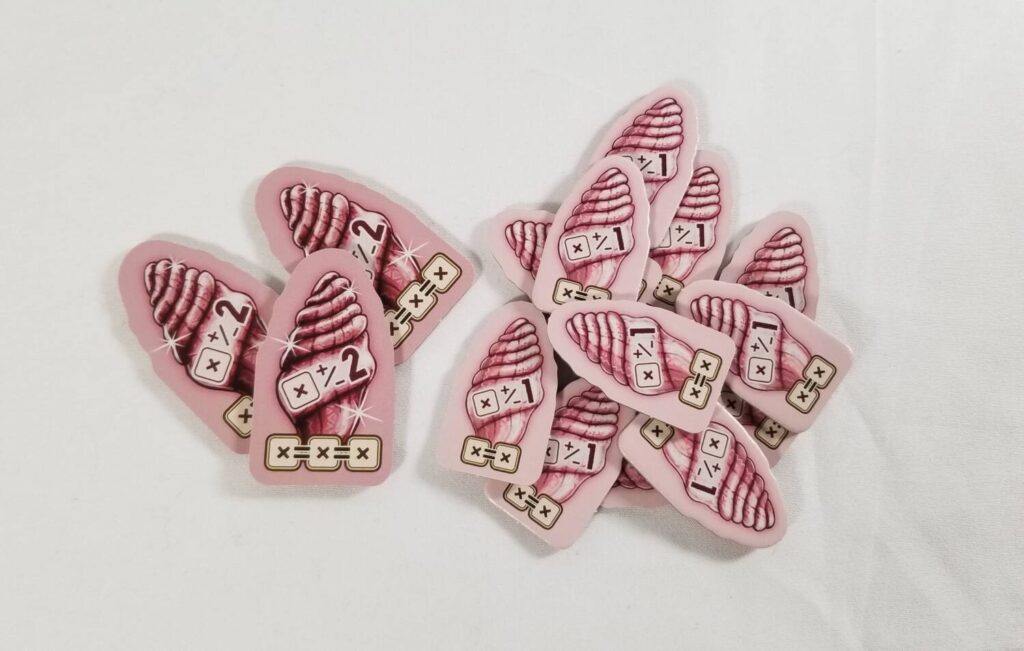
The other big difference—perhaps the most significant of all—is the module that’s included in the box. This module, called ‘the puputus’ reimplements the Orange God tiles expansion that was released for Bora Bora in 2013. These expansions introduce the only dice manipulation that exists across the two games, allowing you to add/remove pips if you’re lucky enough to obtain the tiles. If you’re a Feld completionist like me that was late to the game, you’ve no doubt come to realize that getting your hands on the Orange God tiles expansion is no easy feat. Sure, you can find listings on the BGG marketplace, but they’re all uncomfortably pricey. With Cuzco, there’s no wheeling and dealing involved. It’s right there in the box.
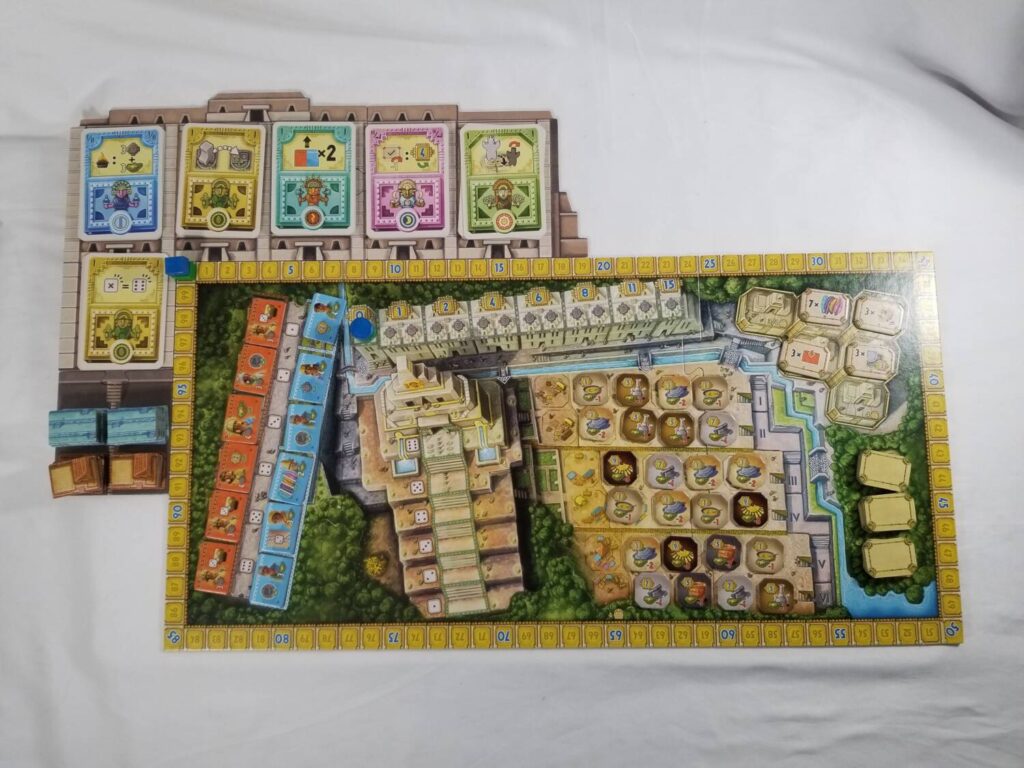
If you were to ask me which one of the two games I’d recommend personally, I’d tell you that it all comes down to personal preference—taking theme, table space, and the God card setup into account. If table space is at a premium, Bora Bora’s the better pick. If you like variability, Cuzco’s your game. The preference for one theme or the other is largely subjective.
I’m wishy-washy because I like them both.
But does the inclusion of a reimplementation of an out-of-print expansion make up for the fact that there’s little between the two games mechanically? And does it trump the fact that, unlike its predecessor, Cuzco is a massive table hog? I think not. While I heartily recommend one or the other, I cannot, in good faith, recommend one if you already have the other.
Unless, of course, you’re a Feld completist like me. In that case, the answer is a no-brainer.



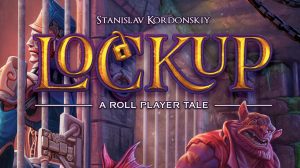







Add Comment